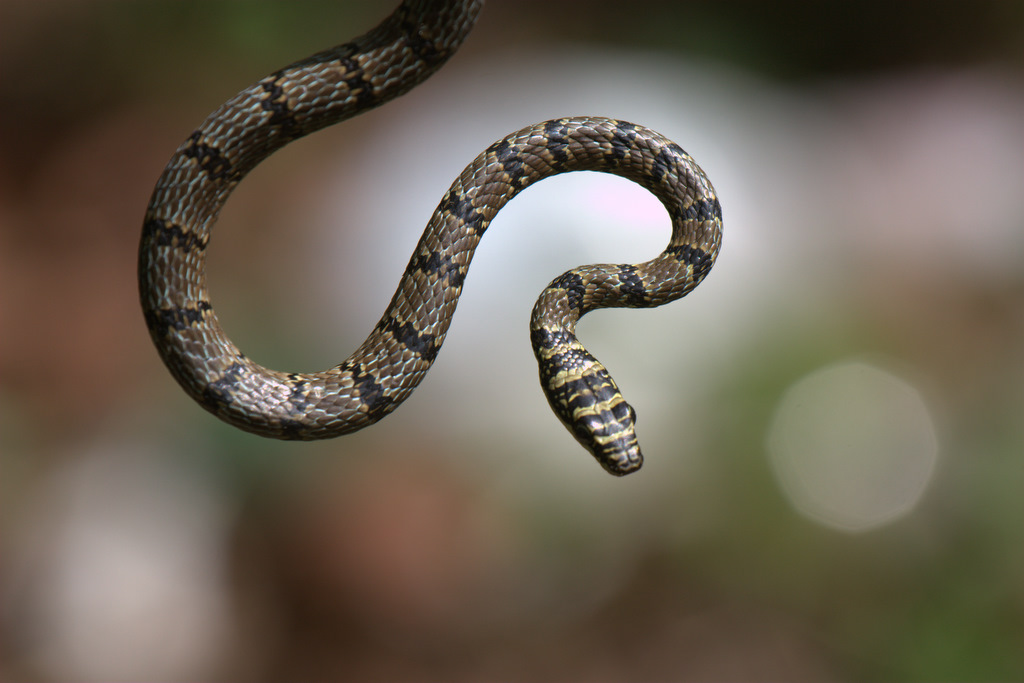"Secret Snakes and Serpent Surprises" is a recent book (2022) by Dr Karl P N Shuker. Or perhaps not so recent, since much of the material has already been published, more or less, at the author´s website ShukerNature. The book is a motley collection of articles on every conceivable topic related to cryptozoology and snakes. "Cryptozoology", usually considered a pseudo-science, is the name enthusiasts have given to the search for monstrous mystery animals, often called cryptids, and it hardly comes as a surprise that many cryptids are serpentine. Eye witness accounts of impossibly large snakes exist from all over the world (in America, they are known as "boss snakes"). There are also tales, more or less believable, of strange hybrids, snakes that crow like a rooster, snakes with two heads (the second one in the rear), and (of course) ultra-venomous snakes (the bite of the "snow snake" can supposedly turn your blood into ice). There are also weird ophidians in religious mythology, and Shuker actually discusses observations of divine Nagas in Southeast Asia and India. One chapter deals with the snake that tricked Adam and Eve in Eden (did it walk on two legs and had the head of a female?). Shuker has also discovered a new Bible difficulty: the Acts of the Apostles mentions Paul handling a viper on the island of Malta, where no vipers existed in Biblical times...
Some of the reported sightings are dubbed "pseudo-snakes" even by the author. The colorful flying "snakes" in Wales simply must be a tall tale, and so is the "snow snake" of North America. (For some reason, he missed the lindorm reported from 19th century Sweden.) Other observations are more promising, but often impossible to verify. Perhaps there were boss snakes at one point in North American history, but since being large increased the risk of being killed by humans, selection pressure made the snakes smaller. "The scarlet viper" in the UK is perfectly real, but has turned out to be a color morph of juvenile common vipers, not a separate species (which an enthusiast tried to describe over a century ago). Snakes on New Zealand (where no such creatures should exist) have been reported, and even investigated by the proper authorities, but nothing was found. Of course, feral snakes are always a possibility in every survivable climate.
One cryptid snake has actually been scientifically described: Cryptophidion ammanense, based on a photo of a lost museum specimen, the specimen in question being from Vietnam. Yes, the paper was published in a cryptozoological journal. However, more established scientists believe that "the secret snake" is really a misidentified sunbeam snake (a known species).
Shuker clearly wants at least some cryptids to be the real deal, and is very charitable towards "the Namibian flying snake" and the "Mongolian Death Worm". Another distinct possibility is that they are simply creatures of folklore. One problem with judging reports of this kind (which Shuker also points out) is that folklore about known animals also exist, for instance claims that harmless snakes or lizards are really super-venomous. So there is always a possibility that even a "flying snake" might be a bizarre misidentification of a real creature, perhaps a gliding snake, or a snake with wing-like membranes which, however, can´t fly. On Madagascar, there is a folk tale about ants building snake-traps, fattening the captured snake by bringing it food, and then killing and eating it. Recent research suggests that what actually happens is that one species of snake lives inside anthills and defends them against another snake species, which likes to eat ants!
What makes me skeptical to most of these cryptid stories is that the reports are mostly old, and that we now live in the era of cell phone cameras and mass tourism. We should have more evidence for mystery ophidians than we seem to have, had they been real. Note that the only supposed cryptid snake ever described scientifically was very similar to a known species. The discovery of a fossilized Titanoboa (60 million years old) shows that super-sized "nagas" aren´t intrinsically impossible (this primordial serpent was 12 meters long!), but finding such creatures - and even stranger ones - today will probably prove much more of a challenge...

No comments:
Post a Comment